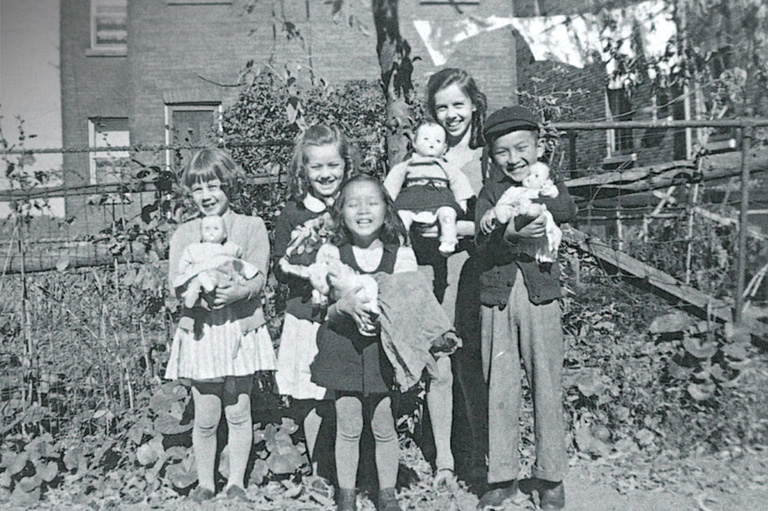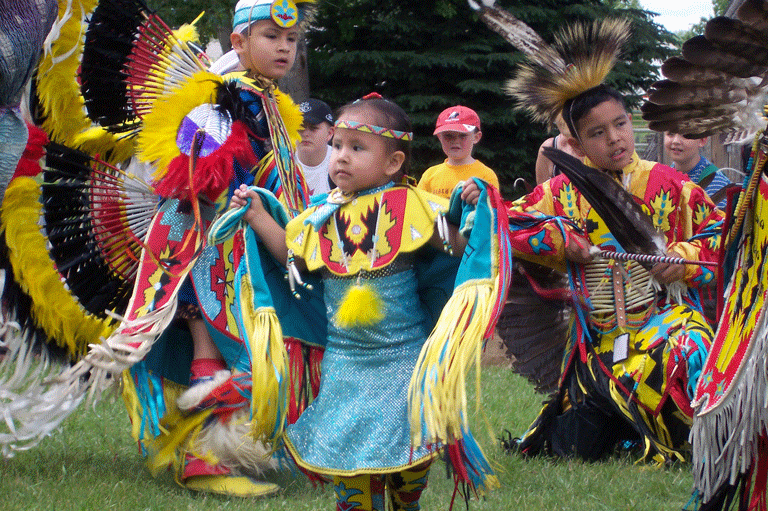Memory of First Peoples at the Museum
Grade Level: 9/10
Subject Areas: Social Studies/History/Geography
Time Required: 60 minutes
This lesson is inspired by the special issue 50 Merveilles de nos musées : Les plus beaux trésors de la francophonie canadienne.
Lesson Overview
During a period of 60 minutes, students reflect on the role of museums in society and the place given to First Peoples in the museum space. Using the article entitled “Montreal’s McCord Museum Opens Up to Indigenous Perspectives,” they will examine some concrete actions of the McCord Museum related to the First Peoples of North America. They will then be guided to reflect on the subject.
Historical Thinking Concepts
- Use primary sources
Learning Outcomes
Understand, analyze and evaluate:
The McCord Museum celebrates life in Montreal, past and present: its history, its people, its communities. Among these communities, we find the museum’s Indigenous Cultures collection. It is made up of more than 16,000 archaeological artifacts and historical objects telling nearly 12,000 years of history.
Students will:
Through this project we hope that students will become aware of the importance of the duty of memory which is communicated by museums and of the places occupied by artifacts, as well as pedagogy on the communities of the First Peoples. The student will use different actions of the McCord Museum as a model and will be able to suggest possible interventions to create a respectful place for First Peoples in our museums.
Background Information
The McCord Museum houses more than 16,000 archaeological artifacts and historical objects. These tell almost 12,000 years of history. The objects that this museum preserves are eloquent witnesses to the material culture of the First Nations, Inuit and Métis in Canada, but also of certain regions of the United States, Siberia and Greenland. These objects reflect the magnificence of the cultures of First Peoples, the great diversity of their artistic expressions as well as their extraordinary capacity to adopt and incorporate foreign influences. These objects evoke traditions, world views and knowledge that are several centuries old.
It is essential that the management, documentation and presentation of such a collection can take place while considering current sensitivities and making room for Indigenous voices and perspectives. The McCord Museum is committed to increasing the accessibility of this collection to Indigenous nations, and to ensuring that its influence reflects their contemporary concerns and perspectives. Curators must be sensitive and attentive to Indigenous concepts and protocols in order to maintain good relations with the communities whose objects the museum preserves. Finally, at the heart of the mission, the McCord Museum adopts a museum approach of Indigenization and decolonization. This approach promotes a climate of respect and openness between the museum and the different Indigenous nations.
Lesson Activity
- Ask students to answer these three spontaneous questions individually on a piece of paper (Students have 5 minutes to answer the questions and the teacher may take another 5 minutes so that students can voluntarily express their answers to the group [total 10 minutes ]):
- Did you know that there are currently more than 640 Indigenous communities across Canada, divided into three distinct groups — First Nations, Inuit, Métis?
- YES
- NO
- Do you know of a museum (if so, which one) that preserves First Nations, Inuit or Métis artifacts?
- Have you ever visited a museum exhibit yourself that features Indigenous objects?
- YES
- NO
- Did you know that there are currently more than 640 Indigenous communities across Canada, divided into three distinct groups — First Nations, Inuit, Métis?
Then, by show of hands, the teacher asks the students for their answers to questions 1 and 3. Finally, the teacher may ask 4-5 students to identify a valid answer for question 2.
- Have students read the text by Jonathan Lainey: “Montreal’s McCord Museum Opens Up to Indigenous Perspectives” (We suggest allowing 15 minutes for this reading). Then, the teacher may invite students in groups of 3 or 4 to read, discuss and answer the following three questions:
- There are currently more than 640 Indigenous communities across Canada, divided into three distinct groups: First Nations, Inuit and Métis. In your opinion, how could museums respectfully highlight the memory of all these communities?
- Imagine that you are responsible for creating a major exhibit about the First Peoples of America. What themes would be at the heart of your museum exhibition to ensure you highlight all the cultural richness and diversity of these Indigenous communities?
- How would you suggest to respectfully address sensitive and difficult subjects such as Residential Schools or Missing and Murdered Indigenous Women and Girls?
Students have 15 minutes to read the text individually. They will have 20 minutes to answer the three questions as a group. Then the teacher will take 15 minutes of class time and designate a group leader so that each team can share their answers (total 50 minutes).
Materials/resources
Themes associated with this article
Advertisement





